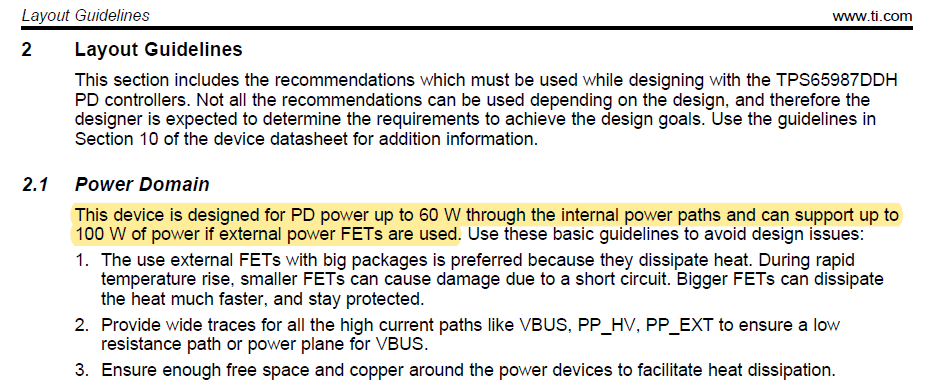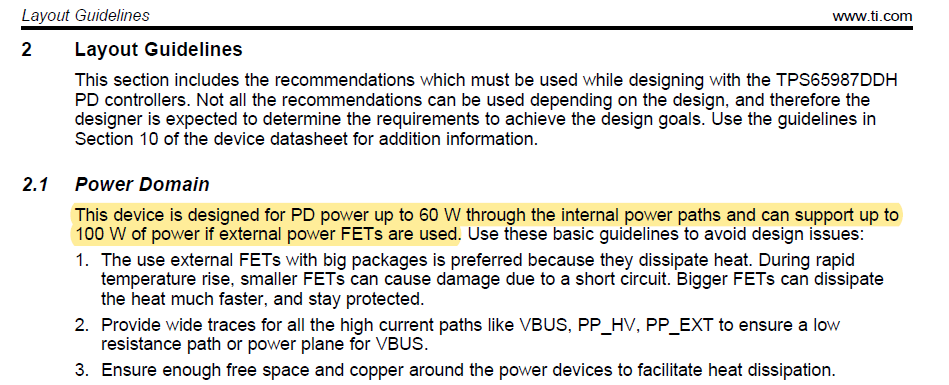Other Parts Discussed in Thread: TPS65987D, TPS65987
Hi,
One of my customer wants to use TPS65987D for 100 Watt PD requirement, they raised few queries related to design configuration.
They want to use this device as power PD & how to configure for 20V / 5A application?
Their preference if for auto configuration depending on source available to PD, is it possible or need software configuration to achieve the same. If software configuration is needed then their TPS65987D should be support 20V / 15V as a default input, how to configure for the same?
Pls. help with the response on above queires.
Mitesh



